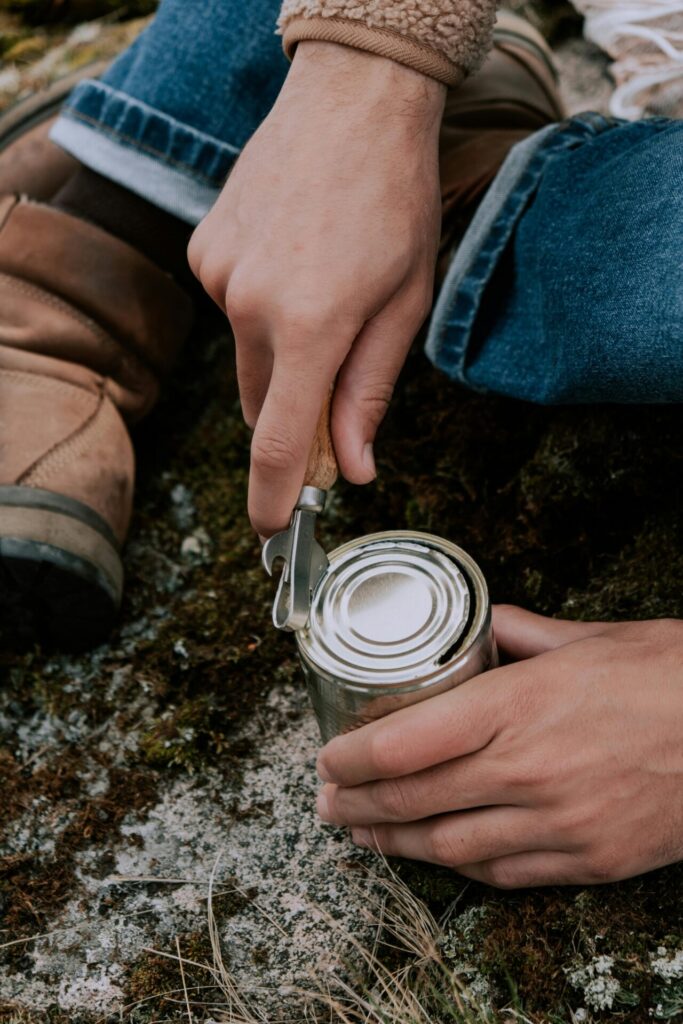Step-by-Step Guide: How to Clean a Can Opener the Right Way

“Proud Homemaker is part of several affiliate marketing programs, so we may earn commissions on products selected and purchased through our retailer links.”
Let me be honest—cleaning a can opener was never on my regular to-do list. I mean, it just opens cans, right? How dirty could it really get? Turns out… very. One day, while prepping dinner, I caught a glimpse of the grime lurking around the blade of my trusty manual can opener, and it stopped me in my tracks. Yikes. That’s when I realized this unsung kitchen hero needed some serious love. So, I went all in—manual, electric, even a rusty one I nearly tossed out. If your can opener’s been silently suffering too, here’s your full guide to cleaning it the right way.
Read: Hidden Places You Always Forget to Clean.
Why Bother Cleaning Your Can Opener?
Before we dive in, let me quickly tell you why it’s worth your time. Over time, bits of food, especially from canned beans, tomato sauce, or tuna, get trapped around the blade. This buildup not only affects performance but also becomes a breeding ground for bacteria. Left untouched, it can dull the blade, cause rust, and even make your food taste off. Cleaning it isn’t just about hygiene—it’s about keeping your tool functional and long-lasting.
How to Clean a Manual Can Opener
So let’s start with the good old manual can opener. Whether yours is a handheld one with a turning crank or the kind with a gear mechanism, they all need the same TLC. Here’s how I tackled mine:
What You’ll Need:
- Warm water
- Dish soap
- An old toothbrush or a small brush
- White vinegar (optional)
- Baking soda (for tough grime)
- A towel for drying
- Cotton swab or toothpick
Step-by-Step Cleaning Process:
Step 1: Soak the Can Opener
I began by soaking my can opener in warm, soapy water for about 5–10 minutes. This helped loosen dried food particles and grease.
Step 2: Scrub the Blades and Gears
Next, I used an old toothbrush to scrub every nook and cranny, especially the gear that rotates the blade. You’ll be amazed at how much gunk can hide in those crevices. If there’s stuck-on food, a paste made of baking soda and water helps lift it right off.
Step 3: Use a Toothpick or Cotton Swab
Some spots were too tight for a brush, so I used a toothpick to dislodge stubborn bits near the blade and handle joint. Cotton swabs dipped in vinegar are great for cleaning small gaps, too.
Step 4: Rinse Thoroughly
After scrubbing, rinse your can opener well under warm running water. Make sure no soap or debris is left behind.
Step 5: Dry Completely
This step is crucial! Moisture is what causes rust. I patted mine dry with a towel and left it out to air-dry for a bit.
Optional: Lubricate the Gears
If your can opener feels stiff after cleaning, a drop of food-safe mineral oil on the gears makes it work like new again.
Read: How To Get Rid Of Fruit Flies From Home Right Away

How to Clean an Electric Can Opener
Electric can openers are fantastic—until you realize they also need cleaning. I had one I hadn’t touched in months, and when I popped the cutting mechanism off… yeah, it wasn’t pretty.
What You’ll Need:
- Damp cloth or sponge
- Mild dish soap
- Toothbrush or cotton swabs
- White vinegar
- A towel for drying
Step-by-Step Cleaning Process:
Step 1: Unplug the Device
Always start by unplugging the can opener to avoid any accidents. Safety first!
Step 2: Remove the Blade or Cutting Assembly
Most electric models have a removable cutting wheel or assembly. I gently popped mine out and soaked it in warm, soapy water.
Step 3: Scrub the Removable Parts
Using a toothbrush and some soap, I scrubbed the blade, focusing on any caked-on food or residue. Vinegar helped with sticky or greasy buildup.
Step 4: Wipe Down the Body
For the main unit, I didn’t soak it. Instead, I used a damp cloth with a bit of soap to wipe down the exterior. Don’t forget the area around where the blade attaches—it often hides hidden grime.
Step 5: Dry and Reassemble
After everything was clean and dry, I reassembled the parts and gave the opener a quick test. It worked smoother and looked way less gross.
How to Remove Rust from a Can Opener
Now, let’s talk about rust. I almost threw away one of my older can openers because of some light rusting—but I’m so glad I didn’t. With the right method, rust doesn’t stand a chance.
What You’ll Need:
- White vinegar
- Baking soda
- Lemon (optional)
- Scrubbing pad or steel wool (gentle grade)
- Toothbrush
- Towel
Step-by-Step Rust Removal Process:
Step 1: Soak in Vinegar
I filled a bowl with white vinegar and let the rusty parts of the opener soak for a few hours. If your opener isn’t fully metal, just soak the affected area using a cloth soaked in vinegar.
Step 2: Scrub the Rust
After soaking, the rust started to loosen. I used a scrubbing pad and toothbrush to gently lift it away. For tougher spots, I made a paste with baking soda and lemon juice—it fizzed up and worked wonders!
Step 3: Rinse and Dry
I rinsed the opener under warm water and made sure it was completely dry. Rust loves moisture, so don’t skip this part.
Step 4: Prevent Future Rust
Finally, I rubbed a light coat of mineral oil on the blade and gears. This adds a protective layer and keeps rust from forming again.
Final Thoughts: Clean Tool, Happy Kitchen
After going through this entire deep-cleaning process, I honestly felt so much better using my can openers. They looked newer, worked better, and most importantly, I knew they weren’t harboring old food and bacteria. Now, I make it a point to give them a quick clean every week and a deep clean once a month.
So if you’ve been ignoring your can opener (like I did), consider this your friendly nudge to give it some well-deserved attention. Trust me—your future self (and your canned goods) will thank you!
Tip to Remember:
Always dry your can opener completely and store it in a dry place. It only takes a little moisture to start rust or dull your blades.
Was this article helpful? We’d love to hear your feedback, ideas, or any blog post requests you have—drop them in the comments below!







1 Comment